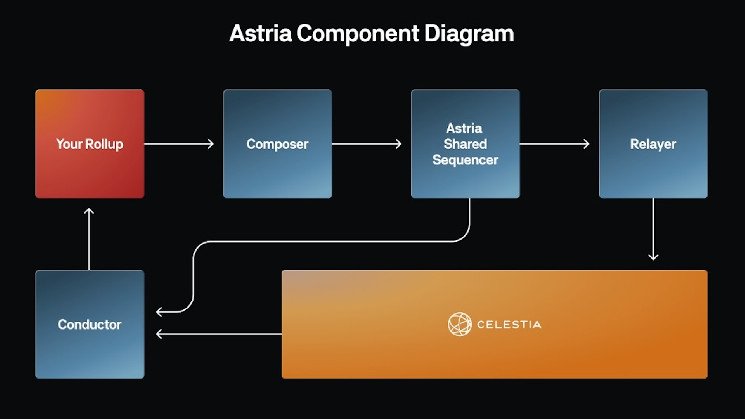Astria, a groundbreaking blockchain project presenting itself as the “first decentralized shared sequencing layer,” has officially launched the main network for its alpha release.
The project is part of a movement towards decentralizing blockchain “sequencers” – the crucial element of a layer-2 network that organizes transactions occurring on the secondary network to record them on a primary layer-1 blockchain, such as Ethereum. For instance, Metis, a layer-2 network for Ethereum, has created its own decentralized sequencer.
Astria’s sequencing layer offers a unique solution as a modular plug-in for other networks, serving as an alternative to centralized sequencers that are often viewed as bottlenecks, single points of failure, or potential sources of transaction censorship. The majority of layer-2 networks currently in operation rely on centralized sequencers, including Coinbase’s Base, which reportedly generates significant revenue for the parent company.
“By launching the mainnet today, we have taken a significant step towards realizing our vision of reinstating decentralization as the standard in the crypto industry,” stated Astria.
The project, which secured $5.5 million in funding in April 2023 from investors such as 1kx, Delphi Ventures, and Figment Capital, was originally conceived as a solution to establish a settlement layer for native rollup networks on the data-availability network Celestia, as per a press release.
“As time went by, we recognized that settlement was not the sole missing piece in the modular ecosystem,” the release mentioned. “Developers required a method to deliver prompt confirmations to their users without depending on centralized sequencers like rollups in other ecosystems.”
Astria can operate in both the Ethereum-compatible EVM environment for smart-contract programming and Solana’s SVM environment.
Astria touts its configuration as “a single, permissionless network that can be shared by numerous rollups, providing both settlement (i.e., bridging) and decentralized sequencing, with fast (~2s) block times and single slot finality.”
Astria proudly declares itself as an “unapologetically Celestia-first project, which would not have come to fruition without the backing of Celestia Labs, foundation, and the wider Celestia ecosystem,” the release added.
The Astria mainnet alpha utilizes Celestia’s token (TIA), and data is uploaded to Celestia. The initial data blog was purportedly posted here.

